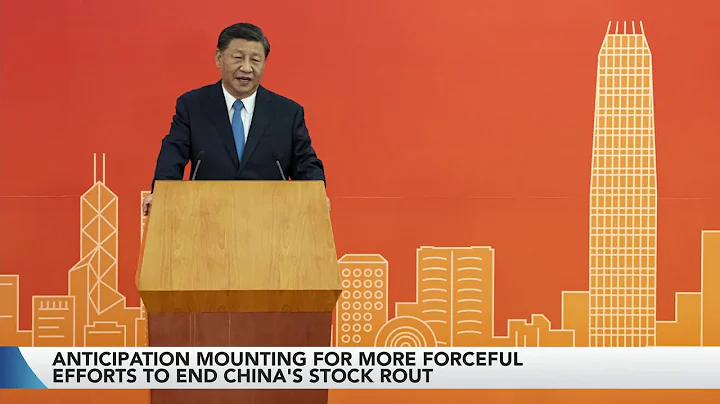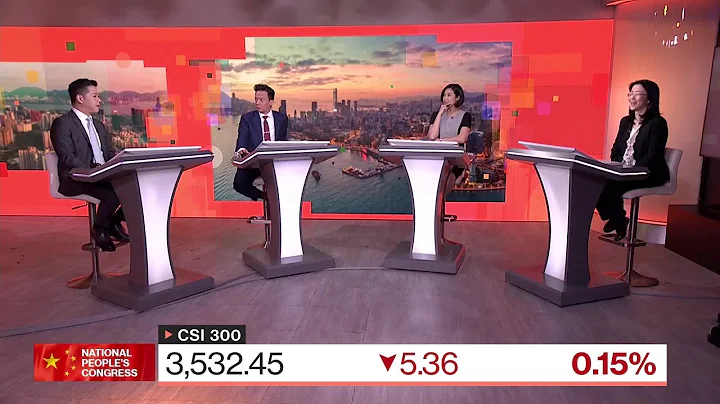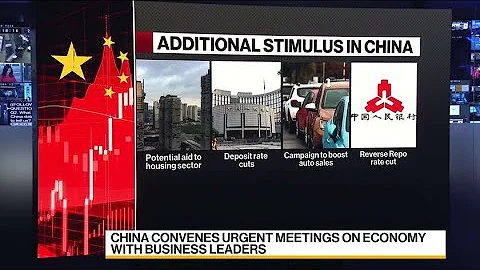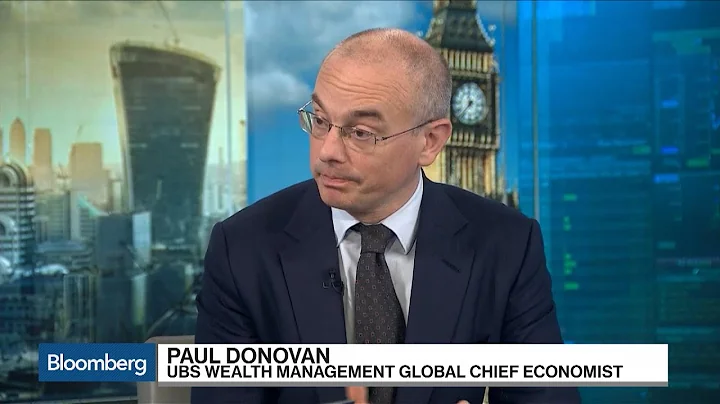Guan Tao is the global chief economist of BOC Securities and a director of the China Chief Economist Forum

Note: This article was published in " China Business Daily " on June 19, 2022.
Editor's note: Recently, there has been a lot of discussion about whether foreign capital has sold off U.S. debt significantly. Regarding this issue, it is necessary to distinguish between flow and stock, otherwise it will not be clear. Will the rise in U.S. bond yields reduce or increase the attractiveness of U.S. bonds, and will it be a negative or a positive for RMB bonds ?
In April this year, foreign investors’ holdings of U.S. debt decreased by $158.3 billion, including a net reduction of $22 billion and a negative valuation effect of $136.3 billion. In the first four months, foreign holdings of U.S. debt decreased by $292.4 billion, including a net increase in holdings. 197.5 billion US dollars, with a negative valuation effect of 489.9 billion US dollars.
Key points
Japan's status in the global trade pattern has declined significantly, which has alleviated the pressure of competitive devaluation of Asian currencies caused by the sharp fall of the yen. If the Bank of Japan abandons yield curve control due to domestic inflationary pressures and Japanese bond yields soar, it will cause huge losses to the Bank of Japan and other financial institutions, and will also threaten to increase the debt repayment burden of the Japanese government. The resulting impact will far exceed the depreciation of the yen, and its impact will not be limited to Asia.
Affected by the divergence of monetary policies between Japan and the United States, as well as the spread of the epidemic, the disruption of the global supply chain caused by the Russia-Ukraine conflict, and the soaring prices of commodities , the exchange rate of the yen against the U.S. dollar since May this year (unless specifically mentioned in this article, all refer to some kind of The currency's bilateral exchange rate against the dollar () fell below 130 to 1 and fell to a 24-year low. This has raised concerns about competitive devaluation and a return to the Asian financial crisis. However, the author believes that the sharp fall of the yen is not a concern, but the risks implied by the circuit breaker of Japanese government bonds should be paid more attention to.
The influence of the Japanese yen exchange rate weakened after the Asian crisis
On July 2, 1997, the fall of the Thai baht triggered a currency crisis in Southeast Asia, which gradually evolved into the Asian financial crisis that swept emerging markets around the world. During this period, the depreciation of the Japanese yen added fuel to the fire and directly brought down the traditional strong currencies in Asia - the Singapore dollar and the Taiwanese dollar of China, exacerbating the competitive depreciation of Asian currencies. By August 11, 1998 (the low point of the Japanese yen exchange rate in this crisis), the Japanese yen had fallen by 22% compared with July 1, 1997, and the Singapore dollar and the New Taiwan dollar had fallen by 19% and 20% respectively (see Figure 1) . At that time, the Chinese government promised not to depreciate the RMB, preventing the contagion of the confidence crisis and promoting financial stability in Asia and the world.

During the crisis, the exchange rates of other Asian currencies mostly "rose and fell" with the Japanese yen. According to the daily major currency exchange rate data released by the Federal Reserve , the correlation analysis after taking the natural logarithm of the exchange rates of major Asian currencies from the beginning of 1997 to the end of 1998 shows that the RMB and the Japanese yen are basically unrelated. During the same period, the Indian rupee, Malaysian ringgit, Singapore dollar , Korean won, New Taiwan dollar, Thai baht and the Japanese yen all had a strong positive correlation, and they all had a strong negative correlation with the RMB (see Table 1).

But after the crisis, the aforementioned correlation changed. Similar processing of the data from July 22, 2005 (since the "7.21" exchange reform to ) to August 10, 2015 (before the "8.11" exchange reform) shows that the RMB and the Japanese yen have a strong positive correlation. During the same period, ringgit , Singapore dollar, New Taiwan dollar, Thai baht and Japanese yen all had a strong positive correlation. However, compared with the Asian crisis, the positive correlation weakened, and the rupee, Korean won and Japanese yen even turned negative. ; In addition to the rupee, Korean won and RMB which continue to have a strong negative correlation, the ringgit, Singapore dollar, New Taiwan dollar, Thai baht and the RMB have all turned to strong or highly positive correlations. This shows that after the Asian crisis, the co-movements between other Asian currencies and the Japanese yen and the RMB have waxed and waned. Among them, the positive correlation between the Singapore dollar, New Taiwan dollar, and Thai baht and the RMB is significantly higher than the correlation with the Japanese yen (see Table 1) .
performed similar processing on the data from the beginning of 2018 to the end of 2020 (since the RMB exchange rate returned to two-way fluctuations) and showed that the RMB and the Japanese yen are weakly negatively correlated.During the same period, the ringgit, Singapore dollar, Korean won, New Taiwan dollar, Thai baht and Japanese yen were all positively correlated. Except for the Thai baht, which had a strong positive correlation with the Japanese yen, other currencies had extremely weak positive correlations with the Japanese yen. The rupee and the Japanese yen are even negatively correlated; the rupee, ringgit, Singapore dollar, Korean won, and New Taiwan dollar are positively correlated with the renminbi. Except for the rupee, other currencies have a strong positive correlation with the renminbi, and the Thai baht and the renminbi are weakly negatively correlated. Related. This shows that after experiencing the initial shock of the “8.11” exchange rate reform, the co-movement between Asian currencies and the Japanese yen has further weakened, while the co-movement with the RMB has strengthened (see Table 1).
further performed similar processing on the data from the beginning of this year to June 10 and showed that the RMB and the Japanese yen are highly positively correlated. During the same period, the rupee, ringgit, Singapore dollar, Korean won, New Taiwan dollar, and Thai baht were highly positively correlated with the Japanese yen and the yuan. Among these six currencies, half of them have better correlations with the Japanese yen and the RMB (see Table 1). This at least shows that it is difficult to say that only the Japanese yen affects the exchange rate trends of other Asian currencies. Moreover, correlation is not necessarily causation. The collective weakness of Asian currencies this year is more related to the Federal Reserve's unexpected tightening, which pushed the Intercontinental Exchange (ICE) U.S. Dollar Index to a 20-year high. In the first five months, the Japanese yen's exchange rate against the U.S. dollar fell the most among the basket currencies of the U.S. dollar index, reaching 10.4%; the exchange rate of other Asian currencies against the U.S. dollar fell by 1.3% to 4.6%, which was higher than the 0.8% increase in the U.S. dollar index against emerging market currencies. , but lower than the decline of the yen (see Figure 2).

After the Asian crisis, the influence of the Japanese yen exchange rate has generally tended to weaken, benefiting from the increased exchange rate flexibility of other Asian currencies. From 2005 to 2021 (since the "7.21" exchange rate reform), the average maximum annual exchange rate amplitudes of the RMB, rupee, ringgit, Singapore dollar, Korean won, New Taiwan dollar, and Thai baht were 2.1, 1.6, 3.2, and 1.8 higher than those from 1992 to 1996, respectively. , 10.5, 2.2, 8.1 percentage points (see Figure 3). This helps the exchange rate float to act as a "shock absorber" to absorb internal and external shocks.

Japan’s economic and financial influence in Asia is far less than it used to be.
In terms of economic size, before the Asian crisis from 1992 to 1996, Japan’s global share averaged 16.8%, falling to 6.1% from 2016 to 2020. 10.7 percentage points. During the same period, China's share increased from 2.1% to 15.9%, an increase of 13.8 percentage points. Most of the shares of other Asian economies also increased to varying degrees (see Figure 4).

Looking at international lending (including bonds and credits), among international claims, the Japanese yen accounted for 15.3% at the end of 1996, which dropped to 5.4% at the end of 2021, a decrease of 10.0 percentage points; among international debts, the Japanese yen accounted for 10.1% % dropped to 2.6%, a drop of 7.5 percentage points (see Figure 5). Although other Asian currencies are not yet able to challenge the yen's status in this regard, the yen's share has still declined significantly. For a long time, the Japanese yen has been the main financing currency for carry trades, with investors borrowing low-interest Japanese yen to purchase high-interest assets in other currencies. Usually, interest rate cuts and depreciation of the yen are good for carry trades, while interest rate increases and appreciation of the yen are bad. An important background to the attack on the Thai baht in 1997 was that rumors of a Japanese yen interest rate hike triggered the unwinding of Japanese yen carry trades.

Looking at the global commodity export market share, Japan’s share averaged 8.8% from 1992 to 1996, and dropped to 3.7% from 2017 to 2021, a decrease of 5.1 percentage points. During the same period, China's share increased from 2.6% to 13.7%, an increase of 11.1 percentage points. Most other Asian economies' shares also increased to varying degrees (see Figure 6). Japan's status in the global trade pattern has declined significantly, which has alleviated the pressure of competitive devaluation of Asian currencies triggered by the sharp fall of the yen.

Looking at the composition of imported goods from the United States, Japan’s share averaged 15.0% from 1992 to 1996, and dropped to 5.4% from 2017 to 2021, a decrease of 11.6 percentage points. During the same period, China's share increased from 5.7% to 19.3%, an increase of 13.6 percentage points, while the share of other Asian economies increased or decreased (see Figure 7). It can be seen that even in the third-party market, Japan is not a major competitor of other Asian economies.

Obviously, following the experience of the Asian crisis, deducing the spillover effect of today's yen exchange rate may be "cutting the boat to find the sword."
Pay close attention to the risk of the Japanese bond yield curve getting out of control
As the world returns to the era of high inflation, more and more central banks have started the process of monetary tightening. Especially because of the failure of the "temporary" and "peaking" theories of inflation, the Federal Reserve accelerated the pace of raising interest rates and shrinking its balance sheet. The June interest rate meeting raised interest rates by 75 basis points for the first time in 28 years. Relatively speaking, although Japan's inflation has increased, it is generally mild. In addition, Japan is suffering from deflation and economic stagnation. Therefore, the Bank of Japan continues to implement Treasury yield curve control (YCC, which is the 10-year Japanese bond yield curve control). Control it at around 0% and tolerate its fluctuation ±0.25%) policy to support economic recovery. This week's interest rate meeting reconfirmed this policy stance.
However, the market is betting that the sharp fall of the yen combined with the skyrocketing prices of commodities, especially energy and food, will increase imported inflation pressure in Japan and force the Bank of Japan to abandon the YCC policy. For this reason, investors have recently sold Japanese bonds aggressively. On June 15, Japan's 10-year government bond futures fell sharply during the session, recording the largest single-day decline in nine years and triggering the exchange's circuit breaker mechanism twice.
In order to calm the market selling pressure, the Bank of Japan increased its purchase of Japanese bonds. As of June 10, the balance of Japanese bonds held by the Bank of Japan increased by 6.64 trillion yen (see Figure 8); Japanese bonds accounted for 73.2% of the total assets of the Bank of Japan, an increase of 1.2 percentage points from the end of last year, and accounted for 73.2% of the total assets of the Bank of Japan this year. weekly high since. The sharp increase in the supply of Japanese yen in the market has further pushed down the Japanese yen exchange rate.

If the Bank of Japan abandons YCC due to inflationary pressure and Japanese bond yields soar, it will cause huge losses to the Bank of Japan and other financial institutions. In the first quarter of this year, the Federal Reserve's holdings of U.S. Treasury bonds and mortgage-backed securities caused a book loss of US$330 billion. According to estimates, if Japanese bond yields rise by 1%, the Bank of Japan's book losses will exceed US$220 billion.
The surge in Japanese bond yields will also threaten to increase the Japanese government's debt repayment burden. Low inflation and low interest rates are important prerequisites for the central bank to finance government deficits and implement Modern Monetary Theory (MMT). At the end of 2021, Japan's government debt burden ratio was 177%, an increase of 35.8 percentage points from the end of 2012, but the national debt service rate dropped from 24.3% to 22.3%. This is mainly because since 2013, the Bank of Japan has implemented a quantitative and qualitative easing monetary policy and introduced negative interest rates and YCC (see Figure 9). It is foreseeable that if YCC breaks through, Japanese bond yields will rise non-linearly. Every 1 percentage point increase in Japanese bond yields means that the Japanese government will use approximately 10% more of last year's fiscal revenue to pay interest on government bonds.

The resulting impact will far exceed the depreciation of the yen, and its impact will not be limited to Asia. For example, after the outbreak of the Asian financial crisis, the share of Japanese yen reserves in the world's disclosed currencies fell for a time, but began to rise again in 2015. From 2017 to 2021, the Japanese yen share averaged 5.51%, an increase of 1.68 percentage points from 2012 to 2016 ( See Figure 10). This reflects the international community's efforts in diversifying the allocation of foreign exchange reserve assets in recent years, but it also means that foreign official investors are more exposed to the risk of fluctuations in Japanese bond yields. In addition, the Bank of Japan's abandonment of YCC may also intensify market tightening expectations, trigger the unwinding of Japanese yen carry trades, and trigger new global financial turmoil. By then, the yen exchange rate may rise instead of falling in the short term.

Coincidentally, the European Central Bank's new interest rate resolution also triggered concerns about the European debt crisis . On June 15, the European Central Bank held a special meeting to study and deal with this matter. Chairman Guo Shuqing said at the Lujiazui Forum in June 2020 that he would consider withdrawing from the large-scale stimulus policy. "When we enter, everyone is happy from all sides, but when we withdraw, it may be very painful." The side effects of the Federal Reserve's violent interest rate hikes and the collective policy shift of major global central banks should not be underestimated. We may be witnessing history again.













![[JAPAN] Alice & Suzu Hirose Tribute (part I) - Classic Japanese Beauties - DayDayNews](https://i.ytimg.com/vi/UHWrbgsZwFE/hq720.jpg?sqp=-oaymwE2CNAFEJQDSFXyq4qpAygIARUAAIhCGAFwAcABBvABAfgB_gmAAtAFigIMCAAQARhyIEwoQjAP&rs=AOn4CLDMsTK8pGHvkkTpEi4qjDej0wPl7w)


![[CELEBRITY COMPILATION] SUZU HIROSE [ENG SUB] - DayDayNews](https://i.ytimg.com/vi/QnCfYTPTEAc/hq720.jpg?sqp=-oaymwEcCNAFEJQDSFXyq4qpAw4IARUAAIhCGAFwAcABBg==&rs=AOn4CLDleo4zFr2yHZ6J4HkRisFB6yCdPA)

![[ENG] "Your Lie in April" commentary cut with Yamazaki Kento & Hirose Suzu - DayDayNews](https://i.ytimg.com/vi/PTTC0PROsds/hq720.jpg?sqp=-oaymwEcCNAFEJQDSFXyq4qpAw4IARUAAIhCGAFwAcABBg==&rs=AOn4CLD60cjdqZ-xXbpqaVP8ZQsIKtAbMg)

![[ENG SUB] Suzu Hirose, Mackenyu and Shuhei moments before 007 Variety Show - DayDayNews](https://i.ytimg.com/vi/S7HKi3fiJRE/hq720.jpg?sqp=-oaymwEcCNAFEJQDSFXyq4qpAw4IARUAAIhCGAFwAcABBg==&rs=AOn4CLAO3j6Yph4H9Np-15_Flf5smW2d8A)
